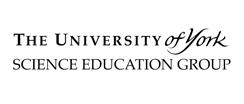Energy transfer in ecosystems
Most of the sugars synthesised by plants through photosynthesis are used by the plant as respiratory substrates. The rest are used to make other groups of biological molecules. These biological molecules form the biomass of the plants.
In any ecosystem the biomass transfers between trophic levels can be measured and the efficiency of biomass transfers between trophic levels can be measured.
Biomass can be measured in terms of mass of carbon or dry mass of tissue per given area per given time. The chemical energy store in dry biomass can be estimated using calorimetry.
Human activities, such as agriculture, can manipulate the transfer of biomass through ecosystems.
Whilst this list provides a source of information and ideas for experimental work, it is important to note that recommendations can date very quickly. Do NOT follow suggestions which conflict with current advice from CLEAPSS, SSERC or other recent safety guides. eLibrary users are responsible for ensuring that any activity, including practical work, which they carry out is consistent with current regulations related to Health and Safety and that they carry an appropriate risk assessment. Further information is provided in our Health and Safety guidance.
Science in the Environment Pack 2: Living Systems *suitable for home teaching*
In this comprehensive resource, from the University of York Science Education Group, there is a specific section of the pack on Ecosystems and energy- section 2A2.1.
The pack was originally intended as self study/independent learning material. It would be suitable for A level students to be asked to work through the ten pages of section 2A2.1. They could read through the material, making notes, and answering the questions throughout the text and at the end of the text. The level of detail is high end GCSE and the numerical requirements will challenge some A level students and support development of mathematical skills, even if the energy production equation is not a requirement of A level specifications.
Section 2A2.2 goes into detail about thermodynamics and is a step too far in terms of the requirements for A level biology.
Energy Transfer *suitable for home teaching*
This article from the Catalyst magazine focuses on food chains. It looks at photosynthesis and the loss of energy from plants to animals throughout the food chain. How this limits the number of animals that can survive on the energy fixed by a patch of vegetation is explained.
Although originally written for GCSE level students, the article does contain a good amount of detail on the measurement of energy transfer, and would make good pre-topic reading for A level biologists.
The questions embedded within the text of the article, such as estimate the area of territory a cat would need if it had to fend for itself, would make for a good starter activity.
Practical Guide 7: Ecology
Published by the Nuffield Foundation this Revised Nuffield Advanced Biology Practical Guide is a lengthy and comprehensive guide to a range of possible practical activities related to ecology.
For energy transfer in ecosystems, the most useful chapter is chapter 29, which can be found from page 51 onwards.
There are two practical activities described to investigate energy transfer in ecosystems. One of these requires an aquarium, which may be something worth considering at the start of term as there are a number of other ways this can be used to support A level (for example, classification, microscope work etc).
A level students could complete the practical activity using an aquarium or could be given prepared slides and figures. There are a range of questions that can then be answered linked to this practical activity which provide a good level of challenge.
Similarly the practical activity on energy requirements of a stick insect could also be completed and the questions answered, again developing student’s practical competency, but also their ability to answer questions related to a practical activity.



